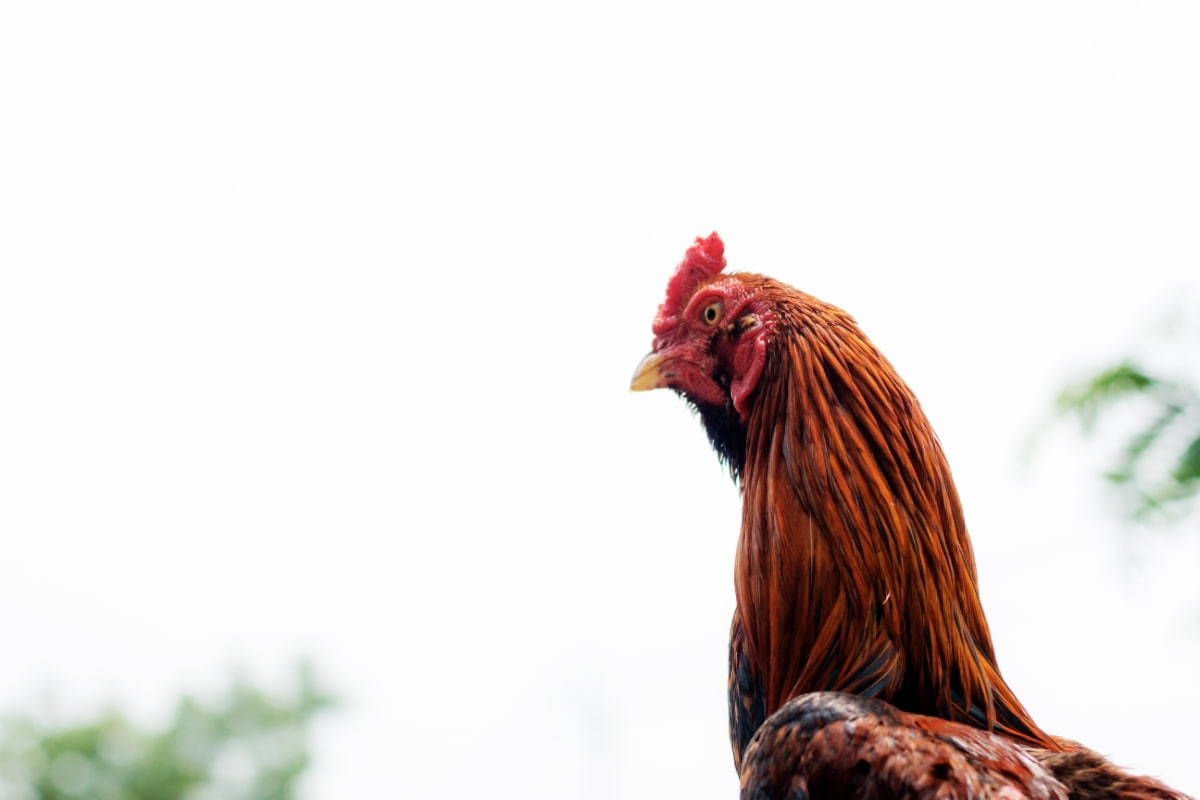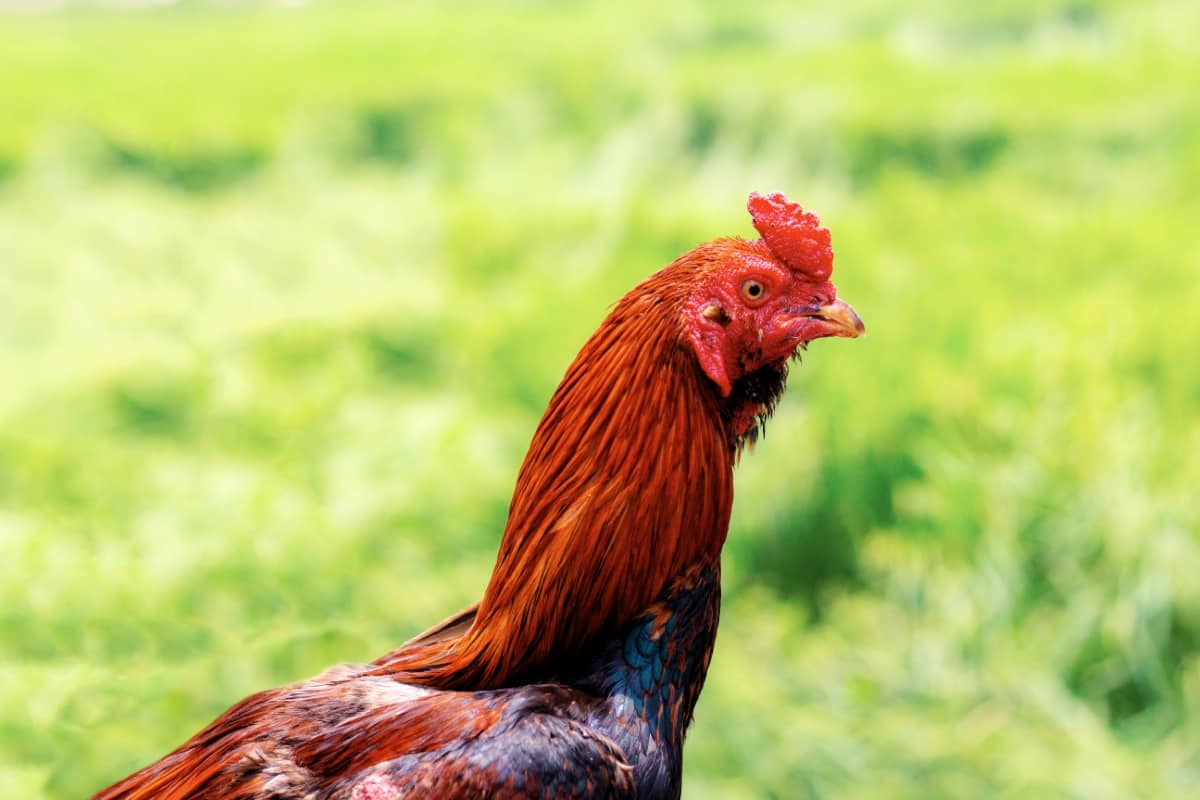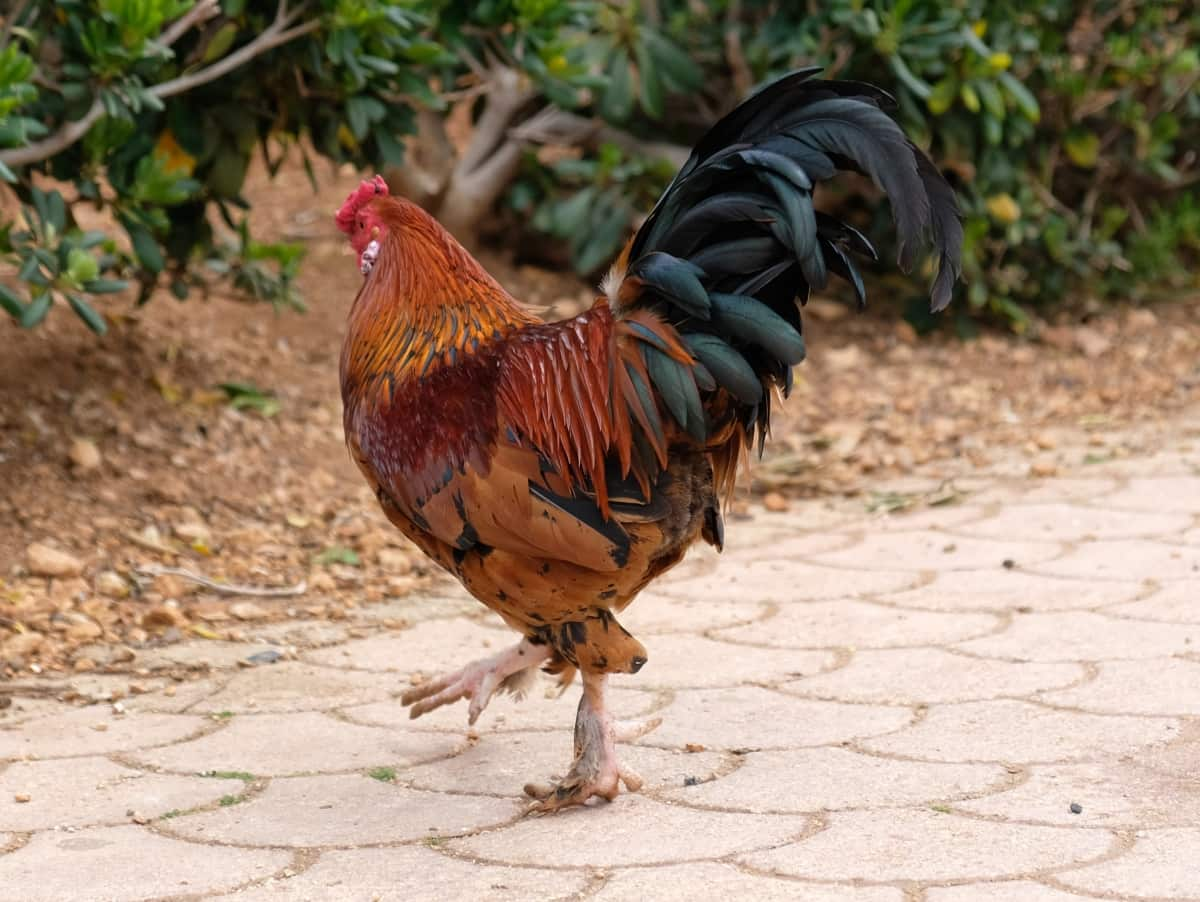Muff Gamefowl, a breed known for its distinctive appearance and impressive fighting abilities, has a rich history. These birds possess remarkable fighting abilities that have been honed over centuries of breeding for strength. These birds can thrive in various climates, making them suitable for rural and urban settings. Muff Gamefowl contributes to genetic diversity within poultry populations.

All You Need to Know About Muff Gamefowl
Origin and History
The history of the Muff Gamefowl can be traced back to the early days of cockfighting in England and Ireland. They were bred specifically for their tenacity, strength, and unwavering fighting spirit. The breed’s origins lie in the careful crosses between English Gamefowl and Irish Gamefowl, resulting in the creation of this distinct breed.
With their origins deeply rooted in the world of cockfighting, these game birds embody centuries-old traditions where courage and determination were highly valued qualities. Today, while cockfighting may be illegal or restricted in many areas around the world due to ethical concerns, Muff Gamefowls is still fondly regarded for their historical significance and cherished by poultry enthusiasts for their striking appearance and spirited nature.
Physical Characteristics
Muff roosters typically fall into the medium-sized category. While each individual may vary slightly in size due to genetics or diet factors, they generally possess a strong muscular build that contributes to their prowess in combat. The most prominent physical characteristic of Muff Gamefowl is their large, round head with a muff-like feathering around the cheeks, giving them their name. These birds have compact bodies and short wings, which contribute to their agile and strong fighting abilities.
The plumage of Muff Gamefowl can vary in color, ranging from solid black or brown to various shades of red or grey. Their feathers are often tight-fitting and lustrous, adding to the overall elegance of these birds. Muffs have relatively small combs compared to other gamefowl breeds. They usually have a single comb that is well-developed but not overly large or protruding. The wattles of Muffs are also moderate in size. Their legs are sturdy and muscular, enabling them to deliver powerful kicks during fights. Muff roosters typically have yellow legs with sharp spurs that they use as weapons in combat.
Muff Gamefowl Behavior
These birds are known for their strong-willed nature and fierce determination. They have a natural inclination towards aggression, which makes them excellent fighters in the arena. Muff Gamefowl can be territorial and will fiercely defend their territory against any perceived threat. They are highly alert and always on guard, making them excellent watchdogs as well.
With consistent handling and positive reinforcement, these birds can develop a trusting bond with their owners. In terms of Muff Gamefowl behavior, these birds exhibit strong instincts for hunting insects or small prey in outdoor environments.
Size and Weight
Adult males can reach an average height between 18-22 inches tall at the shoulder with weights ranging from 4-7 pounds on average. Females tend to be smaller than males. Their relatively small size allows them to be quick and agile in the ring, making it easier for them to dodge attacks and strike back with precision. The compactness of their bodies also contributes to their powerful punches, enabling them to deliver devastating blows to their opponents.
Breeding and Reproduction
Selecting the right breeding pair is crucial. It’s important to choose birds that exhibit the desired characteristics and traits you wish to pass on to future generations. Muffs have a mating instinct, so as long as they are provided with suitable conditions, they will typically breed successfully.
However, it’s essential to create an environment that encourages healthy reproduction. This includes providing ample space for the birds to mate comfortably and ensuring they have access to proper nutrition. Once the hens lay their eggs, it’s important to handle them with care.
Health and Care
Taking care of your Muff Gamefowl’s health is crucial to ensuring their well-being and optimal performance. These birds are known for their resilience, but they still require proper care and attention. It is important to provide a clean and spacious living environment for your Muff Gamefowl. Regular cleaning of the coop or pen will help prevent the bacteria and parasites that can cause diseases.
Feed Muff Gamefowl high-quality poultry feed supplemented with fresh fruits, vegetables, and grains to ensure they receive all the necessary nutrients. Vaccinations should be administered as per your veterinarian’s advice to protect against common poultry diseases. To keep them mentally stimulated, provide opportunities for exercise, such as free-ranging in a safe area or providing toys for entertainment.
In case you missed it: Chantecler Chicken Breed: The Underrated Dual Purpose Breed for Colder Climates

Observe your Muff Gamefowl closely for any signs of illness or distress. Common symptoms include loss of appetite, decreased activity levels, abnormal droppings, respiratory issues, or changes in behavior. If you notice any signs, seek veterinary assistance promptly.
Muff Gamefowl Temperament
The temperament of Muff Gamefowl can vary depending on how they are raised and trained. Proper socialization from an early age can help them become more amiable towards humans and other animals. It’s important to note that while these birds may be aggressive in the fighting arena, they can also display docile behavior outside of combat.
With proper handling and training, Muff Gamefowl can develop a level of trust with their owners. Their high energy levels make them excellent game fowls but require regular exercise and mental stimulation. Providing ample space for them to roam around freely will help positively channel their energy.
Lifespan
These birds can live for a considerable amount of time if properly cared for. On average, Muff rooster’s lifespan will be 10 to 12 years, while hens tend to live slightly longer, reaching up to 15 years. To ensure that your Muff Gamefowl lives a long and healthy life, it is crucial to provide birds with proper nutrition, regular exercise, and clean living conditions.
Price of Muff Gamefowl
It’s important to note that prices can change depending on where you purchase your Muffs. Local breeders may offer more competitive prices compared to larger commercial hatcheries. You’ll find the price range from as low as $50 for a young bird to over $1,000 for a high-quality, pedigreed adult bird. The price of Muff Gamefowl can vary depending on several factors. These factors include the bird’s age, bloodline, pedigree, and overall quality. It’s important to note that Muff Gamefowl are considered a rare breed, which often contributes to their higher price range.
Popular Strains of Muff Gamefowl
The main strain is the Irish Brown Red Muff, known for its stunning reddish-brown plumage and fierce fighting spirit. This strain is highly sought after for its agility, endurance, and relentless determination in the pit. Another strain is the English Black Muff, which features a sleek black feather coloration and exceptional speed.
These birds are prized for their quick reflexes and tactical thinking during fights. The Blueface Hatch Muff is another popular choice among Muff. With their vibrant blue face feathers contrasting against a white body, these birds exhibit strength and power in every battle they engage in.
Training and Handling
These birds are known for their strong-willed nature and fierce fighting abilities, so it’s crucial to establish yourself as the dominant authority from the start. When training Muff Gamefowl, consistency is key. Establish a routine that includes feeding times and socialization. This will help them develop good habits and become familiar with your presence. Handling Muff Gamefowl roosters should be done with confidence but without aggression.
They respond well to calm yet firm handling techniques. It’s important to remember that each bird has its personality, so adjust your approach accordingly. Some may require more attention and guidance than others during training sessions. Remember that safety should always be a priority when working with gamefowl. Use appropriate protective gear like gloves or arm covers when necessary to prevent injury during handling or training sessions.
Legal Considerations
Even if cockfighting itself is banned in your area, owning Muff Gamefowl for exhibition purposes may still be allowed. However, certain restrictions might apply regarding breeding programs or transporting roosters across state lines. It’s important to note that animal welfare laws also come into play when it comes to keeping game birds like Muff Gamefowl.
In case you missed it: Everything You Want to Know About the Sasso Chicken Breed

Providing proper housing, nutrition, and veterinary care is not only ethically responsible but often mandated by law as well. To stay compliant with regulations and protect the welfare of your birds, consider reaching out to local poultry associations or legal experts who specialize in game bird legislation.
Conclusion
Muff Gamefowl brings beauty and elegance to any flock or farm. With their striking appearance characterized by a distinctive head crest and vibrant plumage colors, they add aesthetic value to any poultry collection. With their beautiful plumage and powerful build, they make for an impressive addition to any flock.
Note: The images presented in this post are intended solely for representation purposes. The images are meant to serve as visual aids and should not be relied upon as accurate representations of their real-life counterparts.
- Ultimate Guide to Ossabaw Island Hog: Breeding, Raising, Diet, and Care
- Ultimate Guide to Juliana Pig: Raising Facts, Size, Diet, Care, and Lifespan
- Raising Lleyn Sheep: Disadvantages, Price, Uses, Characteristics, and Care
- Ultimate Guide to Meishan Pig: Breed Facts, Breeding, Raising, and Care
- Ultimate Guide to Teacup Pigs: Raising, Diet, Lifespan, Cost, and Care
- Guide to Raising Poll Dorset Sheep: Facts, Profile, Characteristics, Uses, and Care
- Ultimate Guide to Bighorn Sheep: Characteristics, Diet, Lifespan, Breeding, and Lifecycle
- Ultimate Guide to Raising Katahdin Sheep: Farming Facts, Breed Profile, Uses, and Care
- Ultimate Guide to Raising Oreo Cows: Belted Galloways Farming Facts, Profile, Uses, and Care